Whether you’re a design pro or a total newbie, you’ll find a great tool in this list that will take your website skills to the next level.
WORDPRESS
#65 – Bob Dunn on Building a WooCommerce Community – WP Tavern
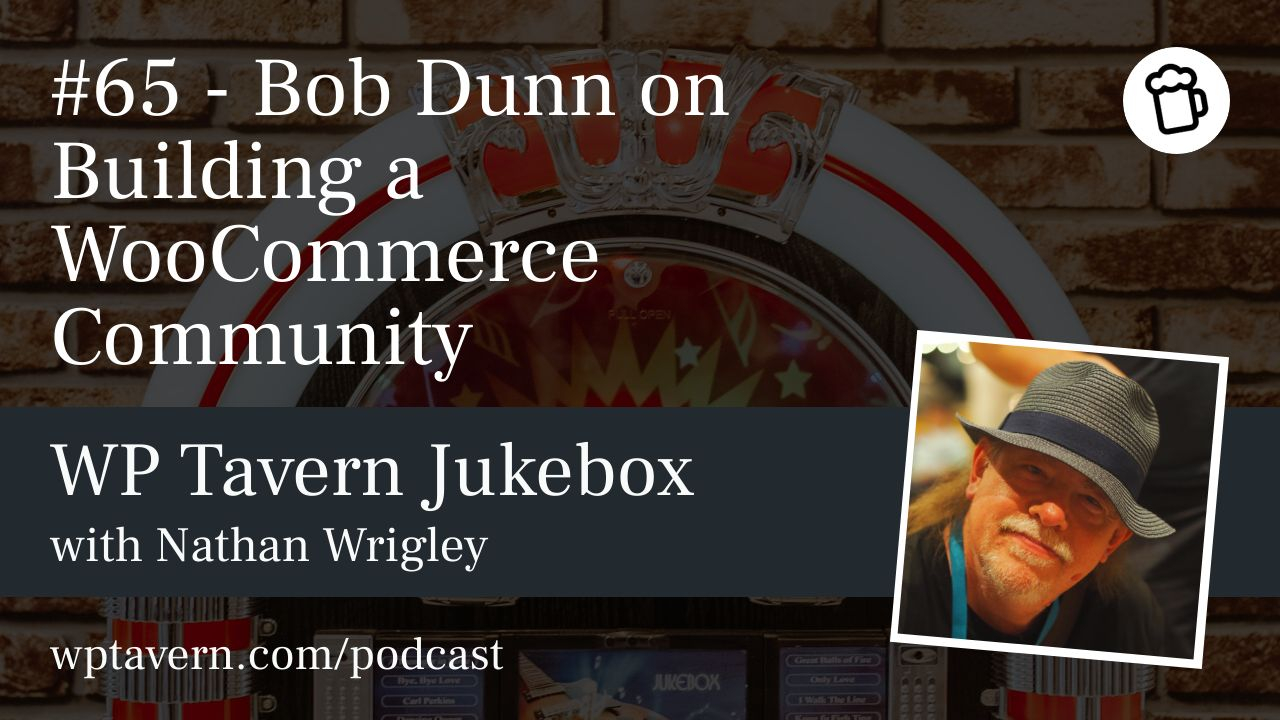
Jukebox has a podcast which is dedicated to all things WordPress. The people, the events, the plugins, the blocks, the themes, and in this case building a WooCommerce community.
If you’d like to subscribe to the podcast, you can do that by searching for WP Tavern in your podcast player of choice, or by going to WPTavern.com forward slash feed forward slash podcast. And you can copy that URL into most podcast players.
If you have a topic that you’d like us to feature on the show, I’m very keen to hear from you, and hopefully get you all your idea on as soon as possible. Head over to WPTavern.com forward slash contact forward slash jukebox, and use the form there.
So on the podcast today, we have Bob Dunn. If you’ve been using WordPress for any length of time, and you’ve been consuming content in the ecosystem, it’s highly likely that you’ve come across Bob before. He’s been using WordPress since 2006, WooCommerce since 2011, and has been podcasting since 2014. In another life before he discovered WordPress, Bob ran a marketing company, but now his endeavors are all about WordPress.
We talk about how Bob found WordPress back in the day, when he was creating websites with HTML and Flash. Bob branded himself as BobWP, and has never looked back. After several years of running an agency alongside his content creation, in 2014 Bob decided to go all in on his content and building a community around it.
As you’ll hear, he tried a variety of different formats, some of which worked, and others which fell by the wayside. But it was all a journey to where he is now.
Given the size of the WordPress community, Bob was able to discover his niche within the greater whole and concentrate upon WoCommerce. His popular Do the Woo podcast was born, and he’s been working on it ever since.
We talk about how Bob has managed to keep the momentum going, and what he thinks are unique about his podcast and community. It’s not about growing a group or worrying about the number of listeners. For Bob, it’s about creating meaningful connections and working to make his community a worthwhile place to be for himself, his cohosts and consumers of his content.
We talk about how growing a community such as this can be financed, as well as the ways that Bob is trying to innovate in the near future to give value back to the WordPress project more generally.
It’s an interesting conversation about how content creators can find a place in the WordPress ecosystem, and what impact they can have.
If you’re interested in finding out more, you can find all the links in the show notes by heading to WPTavern.com forward slash podcast. Where you’ll find all the other episodes as well.
And so, without further delay, I bring you Bob Dunn.
I am joined on the podcast today by Bob Dunn. Hello, Bob. [00:04:05] Bob Dunn: Hey Nathan, thanks for having me on. I’m pretty excited to be here. [00:04:08] Nathan Wrigley: Yeah, you’re very welcome. Thank you. Bob is known to me because we’ve met in the real world, and I’ve been following his podcast for many, many years. But if you don’t know Bob, let’s give you the opportunity to introduce yourself. So it’s a fairly bland question. I’m sorry about that. But it’s the one that we usually start with. Just give us a bit of background, tell us who you are, what your relationship is with WordPress and so on. [00:04:32] Bob Dunn: Okay. Before WordPress, before I even got into WordPress, I ran a marketing company. My wife and I ran a marketing company, and these were the days of print design. So that’s kind of was my background for, for many, many years. And eventually moved into WordPress, which is another little story in itself, but was just looking for something simple and easy to segue into the web as far as our business.
And in 2006, I started playing with WordPress. Got into it more and more. My wife was blogging on Typepad, I believe, at the time. So I was thinking, well, maybe we should check out this blogging thing on WordPress. Got into that. That was what appealed to me first off.
And then secondly was the fact that I had spent, in my other business doing these horrible HTML websites with Flash, and they were just atrociously, they were a horror. And I thought, I’ve got to find something simpler that I can make a nice, clean website for clients. I don’t need anything fancy, and I found that with WordPress and actually did in, I think, 2018, my first WordPress site for our business. And from there it was history. In 2010, I branded BobWP. I’ve been training, I’ve done just about everything in WordPress, or at least tried everything except development. And I’m, where I’m at today with, Do The Woo, which is a WooCommerce builder community site. But yeah, it’s been an interesting and fun journey. [00:06:06] Nathan Wrigley: How did you decide that you were going to turn your attention to what it is that you now do mostly, which is community building and podcasting? Was there a moment in time where you thought, I no longer wish to actually build sites and deal with clients? I want to concentrate on the content creation and the community building. [00:06:25] Bob Dunn: Yeah, around 2014 was when I stopped doing service work, designing sites specifically. I just was burned out. It was to the point where I would almost dread if somebody contacted me to put a site together, and I think it’s just because I’d been doing, at that point, between that and our other business, I’ve been doing client services for a good, probably 23 years or 24 years.
And I thought, man, this isn’t the way to work with clients. I’m not giving them what they deserve. If I have that kind of attitude and I’m just dreading the next project. Ever since the beginning of my involvement with WordPress, the community always played a part. That was a part that really, was always there and always moved me forward.
Back in 2007, 2008, I was on another online community, and it was very unique. I’m not going to get into the explanation of it, take a little bit too long, but that got me more involved in community, online and both in person. And that stuck with me, the community all the way through.
And now the podcasting came along. I was a content maker. In 2007 I went to a workshop with some colleagues of mine, and it was on podcasting and they really wanted me to start a podcast. And I thought, well, this is very intriguing. I was looking at what I was doing. Uh, I don’t have the bandwidth for this. So I told them maybe someday, and that someday came like, I don’t know how many years later. 2014 is when I started the first podcast, and Matt Madeiros, which many of your listeners know from Matt Report and WP Minute. He was doing podcasting way back then too, and he kept poking at me.
And we had a pretty good relationship, we talked a lot. And again, since we were both content makers, he said, come on Bob, you got to try podcasting. So he was never like, down my throat, but every once in a while we’d be talking and he’d go, oh, when you going to start that podcast? So between his less than annoying poking at me, and then having waited, I thought this is prime time.
So in 2014, I said, I got to try this podcasting thing. And I did one for about a year and I called it WP Breakdown. And I thought it was very clever because I was essentially repeating what I did with tutorials and stuff. I was writing, breaking down WordPress. But then I also thought of the frustration of WordPress, somebody having a breakdown with WordPress. So I thought it was clever. I don’t know if anybody ever really got that from the title.
But they were 10, 15 minute monologue podcasts that I did. And I wasn’t really thrilled with it. I think it was a format I had. So after a little over a year I said, I got to quit this. This is just me rambling, regurgitating what I’m writing down somewhere else. I need to wait till something hits me and then I’ll start up again. [00:09:38] Nathan Wrigley: That’s nice. I confess that I don’t think in all the years that I’ve been podcasting, I don’t think I’ve had the courage to do any monologue kind of thing. It’s always been an interview. So either with one person or multiple people. I don’t quite know why that is, but I’ve always found it much more easy to get conversation going, than to persuade myself to sit there and write something that I assume people would want to listen to. [00:10:05] Bob Dunn: Yeah, and I’d always been told, even in the early days of my other career, people always told me, you got to do something Bob. You either need to go into being a DJ or a minister, because of your voice. And I thought, well, you know, you don’t go into something just because of your voice. And that’s where a few people started poking me at podcasting.
Oh, you have a voice for podcasting. I said, well, that’s nice, but it would be better if I had the time and the resources and everything else that comes along with it. The voice alone isn’t going to do it. And I’ve had a, I’ve had a few monologue ones. I’ve had a few interview. I’ve actually done seven podcasts since 2014.
[00:10:44] Nathan Wrigley: That’s really rather a lot. It always amazes me that the community surrounding the WordPress project is big enough that it can have so many little niches. So, you know, if you’ve got a plugin that does one particular thing, that may well afford you a lifestyle, if you can sell it and upsell it and shift some licenses, then you can have a lifestyle there.But also that extends to things like you and I both do. It’s amazing to me that there are enough people out there who are into WordPress that it can support multiple different podcast channels and YouTube channels and all sorts of content creation, tutorials, but also podcasts like you’re listening to now. I find that extraordinary. [00:11:29] Bob Dunn: Yeah, it is amazing. And I think when I was doing it by myself, I realized that no, this isn’t right. This isn’t meant to be me just being here by myself doing some monologue. I’m not really enjoying it. And I think that was a community part of it, nagging at me, because when I started Do the Woo, I think I did one or two episodes and I said basically, screw this, I’ve got to get a co-host at least.
And I reached out to Brad Williams from WebDevStudios. He said, would love to do it. We did a few by ourselves and then I thought even two people week after week or whatever the cadence was back then. Is it really what I want to do? Is it really what the listeners want to hear? The two of us talking week after week. So shortly after that we started bringing in guests. [00:12:26] Nathan Wrigley: I’ve tried my hand at community building with things like Facebook groups and so on. Various different ways of getting the community going, but that feels like an area where you are really concentrating. So it’s not true to say that you do the podcast. You do the podcast plus you have these endeavors to build community. You’ve got a variety of different people helping you create the podcast, but also you are trying to create a community around the podcast. How’s that going and what’s the intention there? [00:13:00] Bob Dunn: I think that, I started with building community around BobWP. So the brand in 2010 that I started, that helped make the way for building other communities, because it’s real hard to build, have these other grandeur ideas and not have built your own community yourself. So I did that, and when I really sat down and started looking at building community and I read books and I listened to the people that were experts in building community and I saw a lot of things and I thought, this just doesn’t, there’s something that doesn’t jive with what I want to do.
And what I discovered was two things that I was looking at building a community. I call it without the noise and without the metrics. And what I mean by that is without the noise, when I first started the idea of Do the Woo and building a community for the WooCommerce builder. Everybody would ask me the question, so are you doing a Slack channel? Are you doing a Facebook group? Is this like a Discord? Where are you building this community? I said, I’m not doing any of those. And they were just kind of pause.
My idea was that, and as painful as it sounds, that I would need to build community, basically one person at a time. That I didn’t need to prove that I have a community of thousands of people, or I have this group that has 10,000 people in it. Because the impact was more important to me than the number. Because as all of us know, you can have 20,000 followers on Twitter, and you engage with maybe 2% of them if you’re lucky.
So there’s that metric that doesn’t mean that your community’s successful or not, I really feel that way. The metric is the communication you’re having with individuals. How you’re connecting people. And that tied into less noise.
I didn’t need a bunch of people in a group on Discord and have them all talking away to each other. We have plenty of opportunities to do that, and I didn’t need to add something to that pile. So taking that in mind and moving ahead with those two, I call them my goals or my mantras, I guess. It’s gone very well because, what I see is, when I have people on the podcast, I have a certain amount of hosts, and our podcast is a little unique to the space because I have like, I believe, nine or 10 co-hosts now that do the different shows.
I kind of mix them up. They all have their different personalities. They bring in a different perspective. And the connections that have been made between hosts and guests and guests and guests and hosts and hosts has been amazing. And it’s not this, like I said, huge number that I’m going to just worry about achieving and saying, join this community of 10,000 people, 20,000. Whatever I want it. Join this community where people are connecting with each other in different ways. And that’s what I think the podcasting has really brought to it.
And you, you have your weekly Monday podcast where you bring in three different people. With you, I’m sure that same thing is happening. You’re building the WP Builds community that way because they’re all connecting. You have the people that come in and listen to the chat. You have guests that maybe have listened to other guests, who knows, they may have reached out to each other. Sometimes we hear about those stories, sometimes we don’t.
And those are the things that are impactful to me. And I think that’s a way to really build community versus these steps that people go through. And there’s nothing wrong with having Facebook groups. There’s nothing wrong with having Discord groups. They all have their place. But personally for me, I knew the direction I needed to go. [00:17:05] Nathan Wrigley: Yeah. In order to allow yourself the time to put into this project. Whatever it is given the time that this podcast is released, wherever you’ve got to. But in order to give yourself the time, you obviously need to finance that. And I’m wondering how that works for you. Do you have relationships with companies? Are you sponsored in certain ways? How do you deal with paying the bills essentially? [00:17:34] Bob Dunn: Yeah, it’s old sponsorships and it’s a tough row. You can get sponsors, no problem. You can get sponsors if you don’t have listeners. They put out all these things that maybe have worked for them. A lot of it is who you know. A lot of it is your own community build up. And a lot of it is luck, I think. So yes, I have currently 12 pod friends that are my major sponsors, and then I have some spots for smaller sponsors.
When I started my first podcast or one of my first, it was, Do the Woo actually, in the early years, changed to a podcast called WPeCommerce. When I started that podcast, out of the gate, I started with sponsors and I was able to get some people to come in and support me. Now, easier said than done. I had a lot of, as you mentioned, a lot of connections in the space. I had already built up a lot of relationships. I built up a brand, whatever that brand may convey, but it obviously was something that sponsors found value in.
Now, you can only carry that so far. You have to really start delivering and you have to, you have to be honest with your sponsors. And how I do it is, a lot of times you will, how do I want to say this? Sponsors will have expectations, and those expectations might be metrics. How many listeners do you have? How many click-throughs am I going to have?
Now, if you don’t have that or that isn’t your main goal, as I said before, with my community, I’m not looking at so much the metrics. I’m looking at the impact it has. Then you’ve got to turn around, sell that. And that’s what I do is I sell the impact of what my sponsors are doing for the community.
And that’s not an easy sell, let me tell you. And not everybody has a budget to spend the money on that. So I’m fortunate. It’s something that when time comes around to get sponsors, it’s not like I just sit back and send out 12 emails and I get 12 yeses. It does take work and it’s not something I recommend for everyone.
You know, there’s a lot of other ways you can fund your efforts. But if you really are able to do it full-time and put into it all your blood, sweat, and tears. And also decide what else you can provide through those sponsorships. Let me kinda step back. I’m kind of going off on a weird tangent.
One of the biggest things I can ask anybody if you’re going to do a sponsorship, whether it’s for a podcast for a community, is two things. Be creative and be flexible. If you send out and you say, hey, this is what you get, case closed, we’re done. Great. If that’s it, and it works, fine. But the only way you can grow a sponsorship, grow trust from sponsors is to throw in some creativity to really basically give them a little bit more of an open book than saying this is what we deliver during this period of time, and that’s it.
And that is what’s going to help you. And it helps them to understand more of what you’re actually doing with the podcast or the community, whatever it may be. Versus just saying, you get this and that’s it. If that makes sense. I kind of went off on a little tangent there and kind of got a little away from community, but the sponsorship is a real, I wish it was cut and dry is what I wish it was.
And I could say, hey, you know, just do this and you’ll be happy, and life will go on and you can go out and smell the roses and live your life. But it can be frustrating, can be challenging, but if you work on it hard enough, you’ll find that sweet spot. [00:21:31] Nathan Wrigley: Yeah, you only have to go to events like WordCamps to see that WordPress has this giant commercial bit to it. There’s hundreds of companies at those events vying for your attention, and they may have booths, they may have great big areas of the exhibition hall if you like, devoted to their product or service. Or it may just be that they turn up and walk the halls and try to meet new people and forge relationships, set up meetings and what have you. So there’s a very large proportion of people in the WordPress space who want to sell into that space. And then along comes somebody like you who is directly talking to those people.
And so I can see that the match is really good. You are essentially a conduit. You’re a short circuit between people who’ve got a product that they wish to sell, and trying to find that audience and it’s hard to build that audience. And I would imagine in many cases, those companies, they really don’t have the resources to build their own independent audience.
So the idea of piggybacking of the hard work that you’ve done over many years must seem very appealing. But also, yeah, I guess they’ve got their constraints in terms of whether they’ve got the budget, what their success criteria are and so on. But do you see yourself as that middle man, if you like? The person that sits between the community who want to listen to authentic people talking in authentic ways, and the companies who want to get their product and service to that audience, but possibly don’t know quite how to do it. [00:23:08] Bob Dunn: That’s exactly how I sell my sponsorships. I’m there to be an advisor. I’m there to be somebody that a sponsor can throw it against the wall and see if it sticks. I can give them my impressions of what’s going on in the community. For our new year with our sponsors, a big part of that is me being a conduit. I mean it’s like, I tell my sponsors it’s, it’s a horrible way to say this, but use and abuse me. I’m here to help you make connections. If you want to talk to somebody, if you want to meet somebody. If I see a potential conversation that I feel would be valuable to whoever and the sponsor, and neither one of them have had any inclination about this may be happening.
I’ll come right to them and say, hey, I’ve talked to so-and-so and I really think you should connect with this person. And at the same time, connecting with the different guests we have, I’ve had some sponsors that have actually connected with guests. In the next 12 months, as a group, what our sponsors are doing as part of their sponsorships now, and this kind of brings a other piece of the community back in, certain percentage of their sponsorship will go right back in to fund some of the things that we’re seeing and doing in the space right now as far as sending people to WordCamps, sending contributors to contributor days.
Helping contributors basically finance all the hours and efforts they’re putting into things. So I thought, what better way, especially for sponsors that may not know where to put that money, where they’ll get the most value for it, putting it back into the community. I want to be that conduit. [00:25:04] Nathan Wrigley: So some of the sponsorship money that you’re receiving in this particular year, you are turning that round and recycling it back to people in your community to help them, as you described, get to WordCamp events. But also I would imagine there’s other things. But that’s the intention is to siphon off a certain proportion of your sponsorship revenue and repurpose it to help community members.
[00:25:28] Bob Dunn: Right. And that’s one of the things, I did it as, I increased my sponsorship and as a added benefit that yes, let’s put this pocket of money together. Again, you may not know where to put it. But I can find the best places. I can talk to the right people. I can make sure that I’m not reinventing the wheel because there’s several organizations being put together, the WP Community Collective, all these other ones that will be able to help with this, and I can partner with them.So I’m real big with partnerships, finding the right place to put the money. I’m just not going to put some form on my site and say, okay, apply to be sent here, or to fund your project or whatever. I want to strategically make sure the sponsors monies are going to the right place. [00:26:19] Nathan Wrigley: Yeah. That’s really interesting. So there’s that as part of your community, but I know you’ve got quite a few irons in the fire and ideas circulating around. Depending on the time that this podcast is released, maybe those ideas will have changed. But right now, as of when we’re recording this, what are the goals, if you like for Bob and Do the Woo and the community around that for this coming year. [00:26:43] Bob Dunn: I really want to get even more people involved, reach more of the underrepresented globally. One big thing is that we want to reach out a lot more global and some of the pockets, especially in the Woo Builder. And it’ll be WooCommerce, I mean WordPress as well. But, it’s getting into those communities and elevating their voices.
Essentially that is what my whole podcast is about. No matter how I do it. I’ve got several different ideas aside from having somebody come in as a guest, I’m going to be doing some panels, some live feeds, and I’d like to define it as a podcast for the community by the community.
So there’s some real interesting pieces we’re looking at. We’re looking at bringing in a few podcasts that will be in native languages, because a lot of my guests, English is not their first language. I feel they struggle a little bit with really expressing themselves, like they would want to express themselves. And I can’t do this a lot, but I thought how great would that be to have, let’s say I’m just going to pick out a country in Europe, France.
I get a couple guests, host. We get a couple guests for them and I basically give them a little bit of direction of what they want to talk about. Probably something WooCommerce, and let them do it in French, and go at it. And this is something that I want to do to give back to those little communities in all these different countries. At least saying, hey, you’re at least special enough and you’re part of this community that we want to at least give you this almost as a gift, and give you the opportunity to raise your voice, but in your own language.
I’m doing a Friday show that I call WooBits, and I’m going to open it up and have a guest co-host come in with me each week and I’ll pick out a topic or two and we’ll just have a conversation. Again, this will be very open. It’s just somebody that wants the opportunity to kind of talk on the level as a co-host, but not have the commitment of doing this on a regular basis or starting their own podcast.
And again, all around elevating their voices. Yeah, there’s several things I’m trying to think of what else is coming to mind, but I’m somebody that likes to think I have these things in place and these ideas in place, but I’m sure organically over the next however many months, other ideas will come and in other great possibilities. And a lot of those do come through the sponsors too. I constantly talk to them and say, do you have some unique idea you wanted to do with the community? Let’s see if we can do something under the guise that Do the Woo and make it happen. [00:29:42] Nathan Wrigley: Given that you are now doing the Do the Woo podcast, and you’ve gone down the rabbit hole of WooCommerce exclusively really. Why did you decide to do that and not focus on WordPress as a whole? Because, obviously WordPress as a whole is much bigger. So why the fascination with Woo was it that you were just more interested in that when you began this journey, or did it just seem like a nice niche to be involved in? What was the thinking there? [00:30:12] Bob Dunn: Boy, that’s a, that’s a good question. I wish I could say it’s as easy as I was drinking one night and decided to do it. But that would be too simple. The whole journey to Woo, I mean, I’ve been involved with WooCommerce since the beginning. I used to use their themes in their early days when their were WooThemes, so I knew them as a company.
I knew, I’ve known a lot of the people there. It was a product that just always impressed me from the time it was released. During my sprint of doing more tutorials and stuff on bobwp.com, a few years back, I decided to focus on WooCommerce only because I knew there was a market, because I was into affiliate marketing at that time. And I knew there was a need.
So that was just general topics, writing about plugins, extensions, things like that. But then the more I got into it, and the more I talked to people at WooCommerce, and the more I talked to people involved with WooCommerce, I felt like the community was of builders who were a little fragmented. And I took upon myself, I thought, what if I was able to actually start bringing them together? Start raising their voices.
And, I realized that the Woo Builder community was very fragmented and they were all doing their own thing. And I, I just thought, okay, with as much experience that I’ve put into WooCommerce, and it just was a natural segue for me. Something just told me along the way to get into it more and more. I felt here’s an opportunity to do something more than just a podcast. Do something community wise. So I, I actually talked to a lot of people over a period of about seven or eight months before I even kicked off Do the Woo, to really get a feel of if this is something that is viable. And everything led me that way.
So, there was that initial interest always using WooCommerce, and it just built on it over the years. And the interesting thing about it is that as much as we talk about WooCommerce, I’m finding I talk just as much about WordPress, in conversations on the podcast and stuff, because obviously WooCommerce is built on top of WordPress. So it’s a slash, you know, Do the Woo, do the WordPress type of thing. Except that that’d be really cumbersome to call it that.
But the two overlap so much that the love and the interests I’ve had in WordPress for so many years fits in. And WooCommerce is a large, large piece of software. A lot of sites out there. And I was hoping by talking especially to people in other countries and their challenges and how they have built these little Woo communities, other places that none of us know about.
I thought, well, it was sure it’d be nice to get them a little bit more noticed and hopefully active and do that in any way I can through the site. I’m kind of going back into community, but something that just grew over time and I just decided to run with it because I really knew that, I just saw the potential for that community. And just a side fact, when I started Do the Woo, I did several episodes of it and I actually flipped over then to a podcast called WPeCommerce Show. And I did that for almost two years, four years I think. And there was probably well over 2, 300 episodes. And that was a more generalized WordPress and e-commerce.
And towards the end of it, I was having this nagging feeling. I wanted to kick Do the Woo back into things. So I actually started to Do the Woo up again. Did both of them at the same time, and eventually decided to end the WPeCommerce and focus on WooCommerce.
[00:34:17] Nathan Wrigley: Do you, given that you are really keen on e-commerce and WooCommerce in particular, and probably keep your eye very closely on how it’s being developed. What’s your feelings for 2023, or indeed the last year? What have you enjoyed in the space? So I’m thinking particularly not about the community there, but some of the bits and pieces that have rolled out into WooCommerce. What’s been exciting, what’s been interesting? What products or services have you seen which you thought, ah, that’s one to watch, or that’s been good to see? [00:34:49] Bob Dunn: You know, I hate to admit this, but I’ve gotten to a point in the last two, three years that I keep on top of WooCommerce by proxy. Because I feel like I’ve been put in a position to put all these other people on, a lot smarter than me, and get the people that really know what they’re talking about to talk about WooCommerce.I think what I’ve noticed most about WooCommerce, and this is maybe, I’m not a developer, I don’t build sites anymore, so sometimes my attention kind of weighs away from some of that stuff, and I get too maybe focused on the people. But I like the growth they’ve been doing. I feel like they’re not just going, you know, crazy. They’re not this like bam, bam, bam. Tons of features, tons of features, flipping this, flipping that. Adding stuff all the time. They, they are taking their time and they’re doing it right, even with blocks.
How long that they’ve taken to bring in Woo Blocks and the discussion around the product page and will the product page stay as it is, or will it become entirely block based? They don’t rush into anything. And sometimes I know maybe for some people that’s frustrating, but for myself as a business person and somebody that’s been in tech for a while, and just having talked to a lot of people. I think the thing that I’ve noticed. Even though the progress is moving fast in a lot of ways, they keep up with the right things, but they don’t push the envelope so much that they overdo it.
And I think that’s the thing I’ve seen the most. And when I have people talk about WooCommerce, I’ve recognized the most is that they’re doing it at a pace that’s good and they’re doing it right, and that’s, my takeaway is. And even when I listen to them talk about what they have in the future, it’s not like this, we have dozens of things we want to do. It’s more of a logical, step by step versus just piling it on. So I think that’s probably my biggest takeaway. And, it is from a bigger, maybe a more bird’s eye view. [00:37:10] Nathan Wrigley: Given that you’ve changed your career several times, you’ve flipped between different jobs. If we cast your eye into the crystal ball over the next few years, do you see yourself still doing this? Do you have as much energy and passion for it now as you did, and do you intend to keep doing Do the Woo? Or do you suspect that the future might offer something else?
[00:37:37] Bob Dunn: Well, if anybody wants to buy Do the Woo, I’m always. No, I’m just kidding. We’re in the, age of acquisitions, no. Seriously, I’m at an age, I started WordPress at the age of, right before my 50th birthday, I started diving into WordPress. So I’m at an age where I’m not looking to come up with the next big and new thing for myself.I’m really content with what I’m doing right now. So I’m think I’m in it for the long haul, because I think it’s going to be around. I don’t know how it will mold itself over the years. But my pivots that I’ve had over the years, and I’ve had several of them. They will be smaller pivots, but they’d still probably be within the realm of what I’m doing, versus just doing another whole swing. Now, I’m also somebody that says never say never, and you don’t know what the future holds. So don’t hold me to it. But I don’t have any, I have too many ideas for this still, and I think there’s still so much potential. I think I’m locked in for a while. [00:38:48] Nathan Wrigley: If anybody’s listening to this Bob, and they’re keen on e-commerce and WooCommerce in particular, and they never knew that you were trying to grow communities and connect people and all of that. Whether they’re from a company that might like to be on the one hand or the community member on the other. Where do they find you? Where’s the best places to get in touch with you and what you do? [00:39:09] Bob Dunn: Best place of course, you can always visit site, dothewoo.io. I do have a bobwp.com site. It’s a little bit lean right now. I’m kind of rebranding that. But dothewoo.io. And then on Twitter, I’m still hanging on Twitter. I mean, I’ll be there till they throw me off or something. You can find me @dothewoo, @bobwp. But basically look for BobWP on Mastodon, LinkedIn, all that stuff. You’ll find me there and that’ll connect you with Do the Woo. [00:39:43] Nathan Wrigley: Bob Dunn, thank you for chatting to me on the podcast today. I really appreciate it. [00:39:47] Bob Dunn: Thank you, Nathan. It was a true pleasure.
WORDPRESS
10 Amazing WordPress Design Resouces – WordPress.com News

Designing a beautiful website from scratch can be difficult for developers of all skill levels. Luckily, in today’s Build and Beyond video, Jamie Marsland reveals his ten favorite WordPress design tools and websites to elevate your next build.
Get inspiration for your next website’s design and then start building with WordPress.com. Ready to get going? Click below to embark on your free trial today:
Here are the sites and resources mentioned in the video:
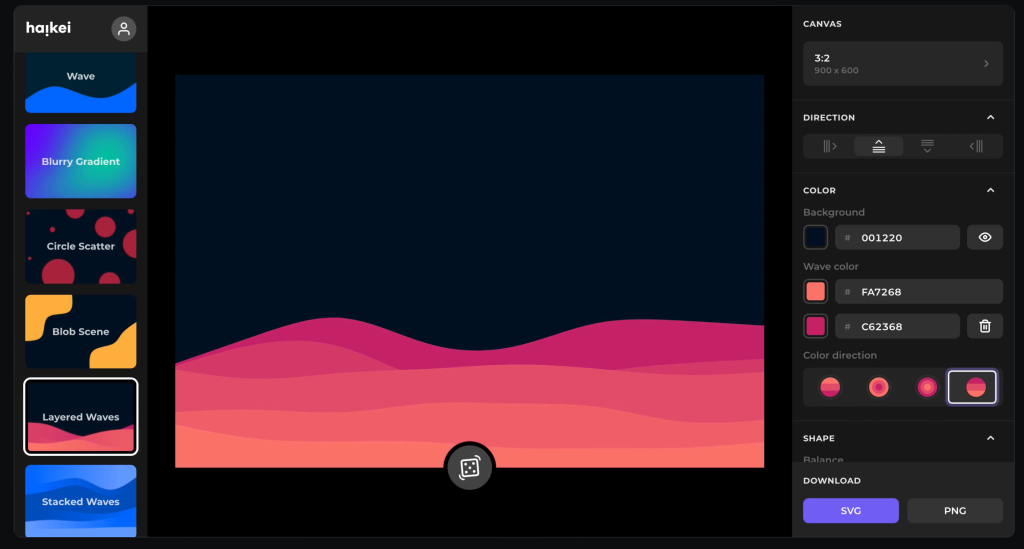
Heikei
Stunning backgrounds and visuals
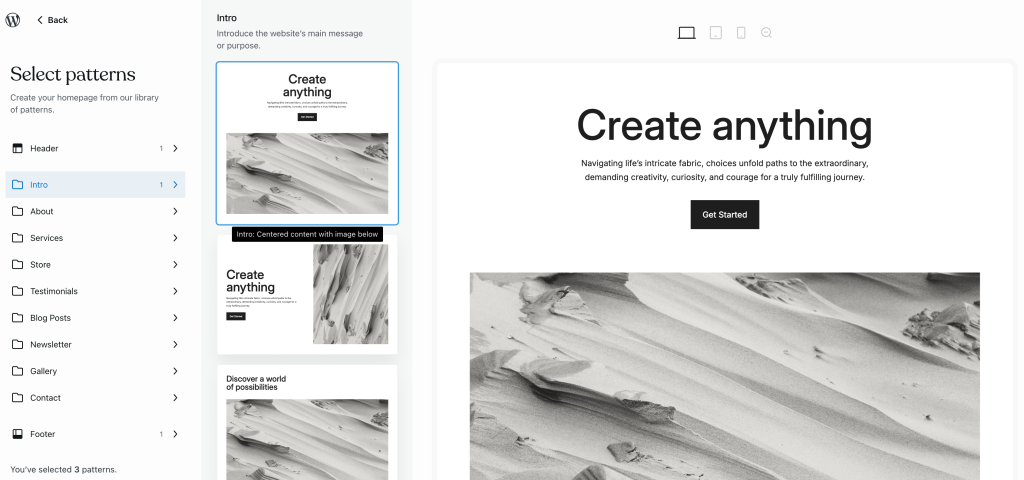
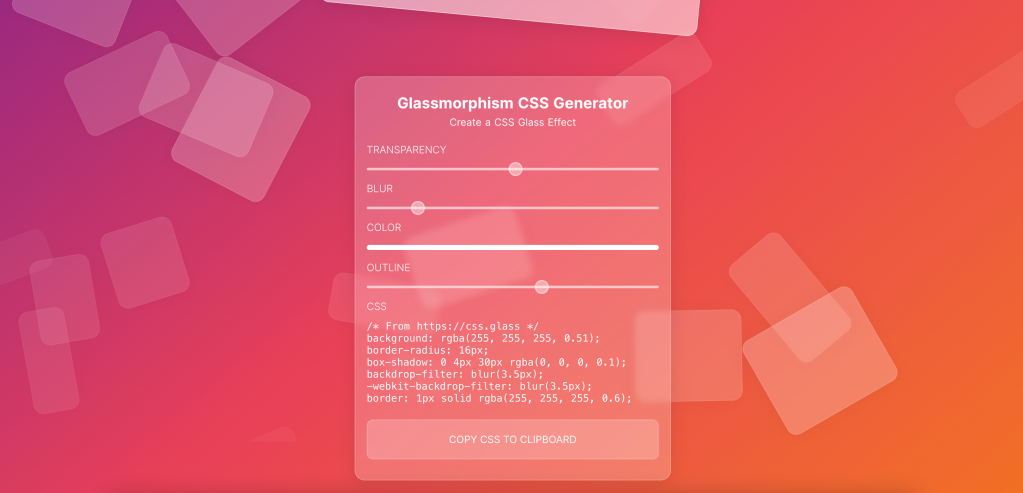
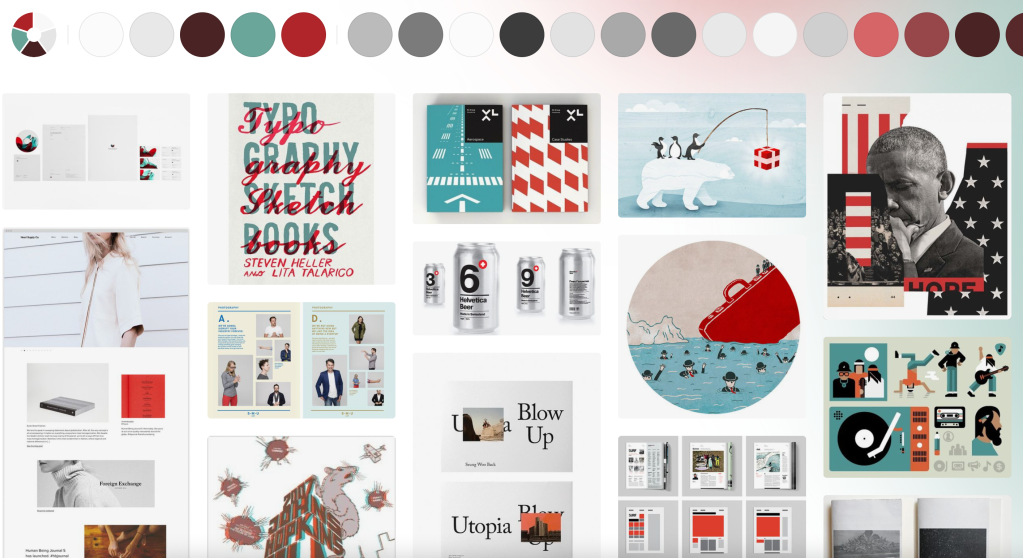
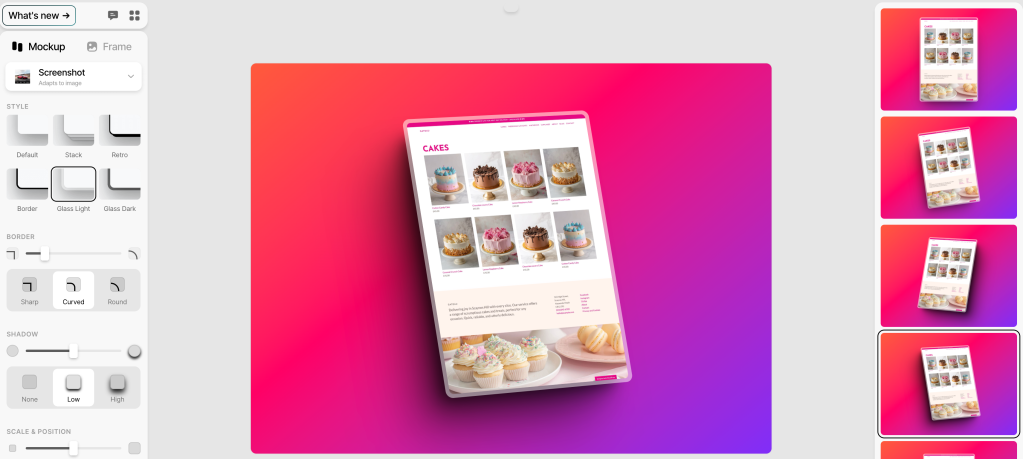
Shots
Easy mockups for products and thumbnails
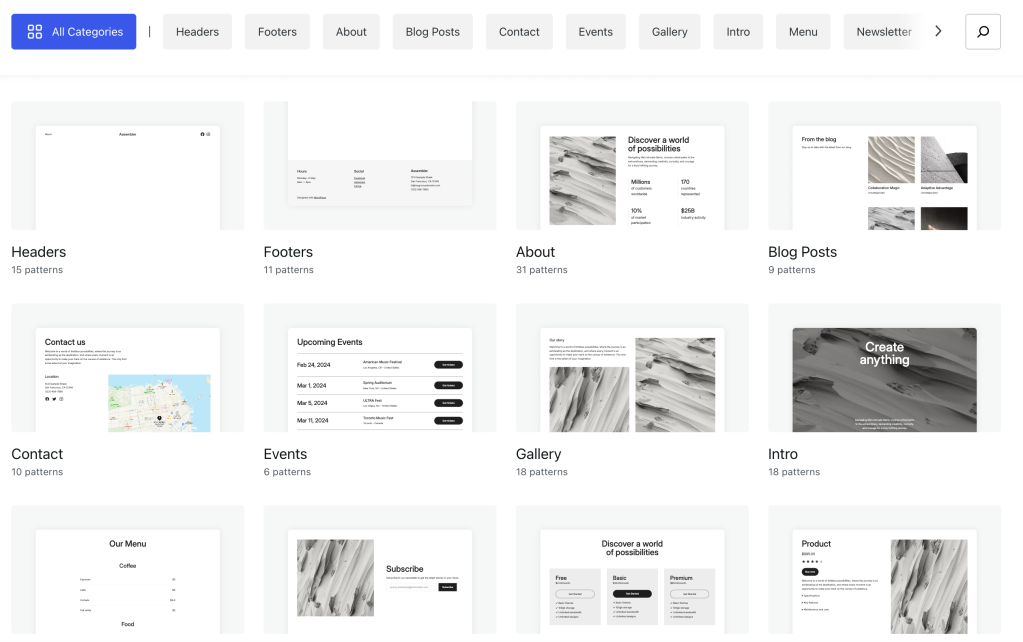
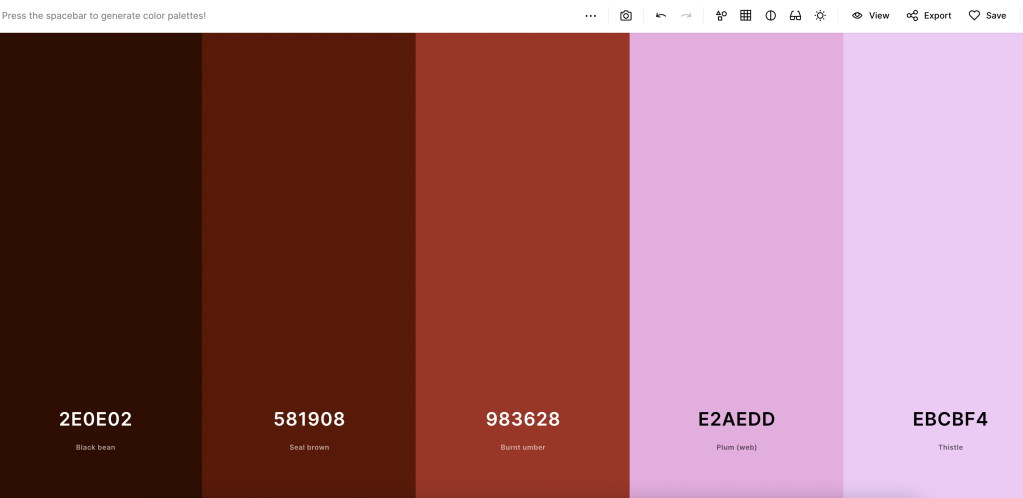
Coolors
Generate color palettes with a click
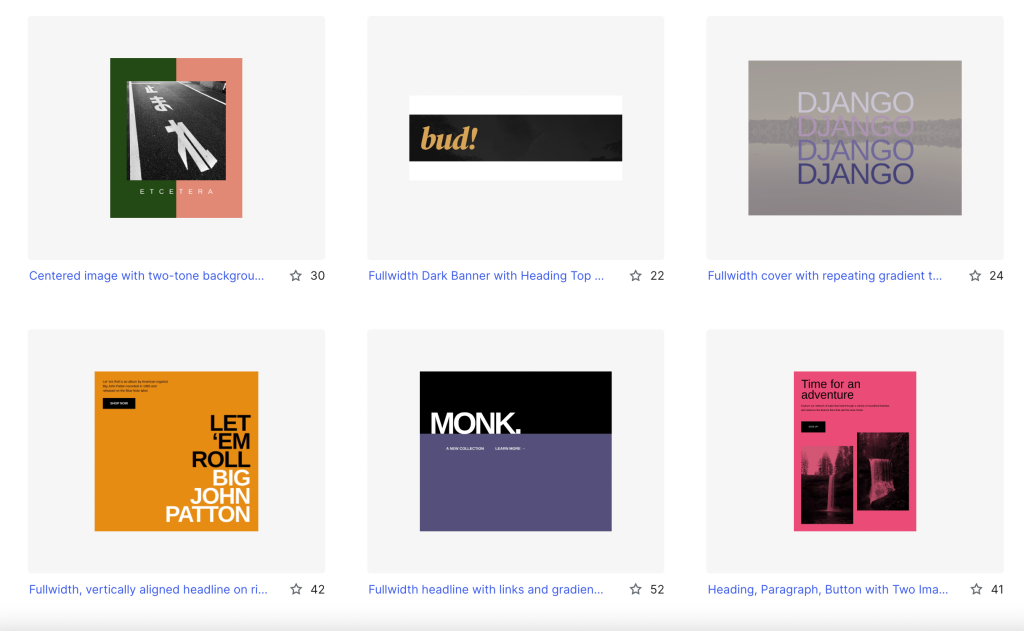

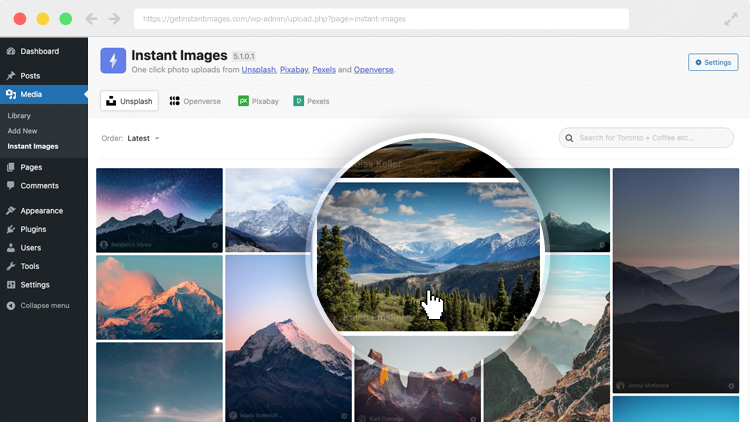
Join 110.1M other subscribers
WORDPRESS
[GET] The7 Website And Ecommerce Builder For WordPress
The7 website and ecommerce builder for wordpress is the most customizable WordPress, Elementor, and WooCommerce theme available on the market up to …
Source link
WORDPRESS
Making 43% of the Web More Dynamic with the WordPress Interactivity API – WordPress.com News

Creating rich, engaging, and interactive website experiences is a simple way to surprise, delight, and attract attention from website readers and users. Dynamic interactivity like instant search, form handling, and client-side “app-like” navigation where elements can persist across routes, all without a full page reload, can make the web a more efficient and interesting place for all.
But creating those experiences on WordPress hasn’t always been the easiest or most straightforward, often requiring complex JavaScript framework setup and maintenance.
Now, with the Interactivity API, WordPress developers have a standardized way for doing that, all built directly into core.
The Interactivity API started as an experimental plugin in early 2022, became an official proposal in March 2023, and was finally merged into WordPress core with the release of WordPress 6.5 on April 2, 2024. It provides an easier, standardized way for WordPress developers to create rich, interactive user experiences with their blocks on the front-end.
ELI5: The Interactivity API and the Image Block
Several core WordPress blocks, including the Query Loop, Image, and Search blocks, have already adopted the Interactivity API. The Image block, in particular, is a great way to show off the Interactivity API in action.
At its core, the Image blocks allow you to add an image to a post or page. When a user clicks on an image in a post or page, the Interactivity API launches a lightbox showing a high-resolution version of the image.
The rendering of the Image block is handled server-side. The client-side interactivity, handling resizing and opening the lightbox, is now done with the new API that comes bundled with WordPress. You can bind the client-side interactivity simply by adding the wp-on--click directive to the image element, referencing the showLightbox action in view.js.
You might say, “But I could easily do this with some JavaScript!” With the Interactivity API, the code is compact and declarative, and you get the context (local state) to handle the lightbox, resizing, side effects, and all of the other needed work here in the store object.
actions: {
showLightbox() {
const ctx = getContext();
// Bails out if the image has not loaded yet.
if ( ! ctx.imageRef?.complete ) {
return;
}
// Stores the positons of the scroll to fix it until the overlay is
// closed.
state.scrollTopReset = document.documentElement.scrollTop;
state.scrollLeftReset = document.documentElement.scrollLeft;
// Moves the information of the expaned image to the state.
ctx.currentSrc = ctx.imageRef.currentSrc;
imageRef = ctx.imageRef;
buttonRef = ctx.buttonRef;
state.currentImage = ctx;
state.overlayEnabled = true;
// Computes the styles of the overlay for the animation.
callbacks.setOverlayStyles();
},
...
The lower-level implementation details, like keeping the server and client side in sync, just work; developers no longer need to account for them.
This functionality is possible using vanilla JavaScript, by selecting the element via a query selector, reading data attributes, and manipulating the DOM. But it’s far less elegant, and up until now, there hasn’t been a standardized way in WordPress of handling interactive events like these.
With the Interactivity API, developers have a predictable way to provide interactivity to users on the front-end. You don’t have to worry about lower-level code for adding interactivity; it’s there in WordPress for you to start using today. Batteries are included.
How is the Interactivity API different from Alpine, React, or Vue?
Prior to merging the Interactivity API into WordPress core, developers would typically reach for a JavaScript framework to add dynamic features to the user-facing parts of their websites. This approach worked just fine, so why was there a need to standardize it?
At its core, the Interactivity API is a lightweight JavaScript library that standardizes the way developers can build interactive HTML elements on WordPress sites.
Mario Santos, a developer on the WordPress core team, wrote in the Interactivity API proposal that, “With a standard, WordPress can absorb the maximum amount of complexity from the developer because it will handle most of what’s needed to create an interactive block.”
The team saw that the gap between what’s possible and what’s practical grew as sites became more complex. The more complex a user experience developers wanted to build, the more blocks needed to interact with each other, and the more difficult it became to build and maintain sites. Developers would spend a lot of time making sure that the client-side and server-side code played nicely together.
For a large open-source project with several contributors, having an agreed-upon standard and native way of providing client-side interactivity speeds up development and greatly improves the developer experience.
Five goals shaped the core development team’s decisions as they built the API:
- Block-first and PHP-first: Prioritizing blocks for building sites and server side rendering for better SEO and performance. Combining the best for user and developer experience.
- Backward-compatible: Ensuring compatibility with both classic and block themes and optionally with other JavaScript frameworks, though it’s advised to use the API as the primary method. It also works with hooks and internationalization.
- Declarative and reactive: Using declarative code to define interactions, listening for changes in data, and updating only relevant parts of the DOM accordingly.
- Performant: Optimizing runtime performance to deliver a fast and lightweight user experience.
- Send less JavaScript: Reduce the overall amount of JavaScript being sent on the page by providing a common framework that blocks can reuse. So the more that blocks leverage the Interactivity API, the less JavaScript will be sent overall.
Other goals are on the horizon, including improvements to client-side navigation, as you can see in this PR.
Interactivity API vs. Alpine
The Interactivity API shares a few similarities to Alpine—a lightweight JavaScript library that allows developers to build interactions into their web projects, often used in WordPress and Laravel projects.
Similar to Alpine, the Interactivity API uses directives directly in HTML and both play nicely with PHP. Unlike Alpine, the Interactivity API is designed to seamlessly integrate with WordPress and support server-side rendering of its directives.
With the interactivity API, you can easily generate the view from the server in PHP, and then add client-side interactivity. This results in less duplication, and its support in WordPress core will lead to less architectural decisions currently required by developers.
So while Alpine and the Interactivity API share a broadly similar goal—making it easy for web developers to add interactive elements to a webpage—the Interactivity API is even more plug-and-play for WordPress developers.
Interactivity API vs. React and Vue
Many developers have opted for React when adding interactivity to WordPress sites because, in the modern web development stack, React is the go-to solution for declaratively handling DOM interactivity. This is familiar territory, and we’re used to using React and JSX when adding custom blocks for Gutenberg.
Loading React on the client side can be done, but it leaves you with many decisions: “How should I handle routing? How do I work with the context between PHP and React? What about server-side rendering?”
Part of the goal in developing the Interactivity API was the need to write as little as little JavaScript as possible, leaving the heavy lifting to PHP, and only shipping JavaScript when necessary.
The core team also saw issues with how these frameworks worked in conjunction with WordPress. Developers can use JavaScript frameworks like React and Vue to render a block on the front-end that they server-rendered in PHP, for example, but this requires logic duplication and risks exposure to issues with WordPress hooks.
For these reasons, among others, the core team preferred Preact—a smaller UI framework that requires less JavaScript to download and execute without sacrificing performance. Think of it like React with fewer calories.
Luis Herranz, a WordPress Core contributor from Automattic, outlines more details on Alpine vs the Interactivity API’s usage of Preact with a thin layer of directives on top of it in this comment on the original proposal.
Preact only loads if the page source contains an interactive block, meaning it is not loaded until it’s needed, aligning with the idea of shipping as little JavaScript as possible (and shipping no JavaScript as a default).
In the original Interactivity API proposal, you can see the run-down and comparison of several frameworks and why Preact was chosen over the others.
What does the new Interactivity API provide to WordPress developers?
In addition to providing a standardized way to render interactive elements client-side, the Interactivity API also provides developers with directives and a more straightforward way of creating a store object to handle state, side effects, and actions.
Directives
Directives, a special set of data attributes, allow you to extend HTML markup. You can share data between the server-side-rendered blocks and the client-side, bind values, add click events, and much more. The Interactivity API reference lists all the available directives.
These directives are typically added in the block’s render.php file, and they support all of the WordPress APIs, including actions, filters, and core translation APIs.
Here’s the render file of a sample block. Notice the click event (data-wp-on--click="actions.toggle"), and how we bind the value of the aria-expanded attributes via directives.
<div
<?php echo get_block_wrapper_attributes(); ?>
data-wp-interactive="create-block"
<?php echo wp_interactivity_data_wp_context( array( 'isOpen' => false ) ); ?>
data-wp-watch="callbacks.logIsOpen"
>
<button
data-wp-on--click="actions.toggle"
data-wp-bind--aria-expanded="context.isOpen"
aria-controls="<?php echo esc_attr( $unique_id ); ?>"
>
<?php esc_html_e( 'Toggle', 'my-interactive-block' ); ?>
</button>
<p
id="<?php echo esc_attr( $unique_id ); ?>"
data-wp-bind--hidden="!context.isOpen"
>
<?php
esc_html_e( 'My Interactive Block - hello from an interactive block!', 'my-interactive-block' );
?>
</p>
</div>
Do you need to dynamically update an element’s inner text? The Interactivity API allows you to use data-wp-text on an element, just like you can use v-text in Vue.
You can bind a value to a boolean or string using wp-bind– or hook up a click event by using data-wp-on–click on the element. This means you can write PHP and HTML and sprinkle in directives to add interactivity in a declarative way.
Handling state, side effects, and actions
The second stage of adding interactivity is to create a store, which is usually done in your view.js file. In the store, you’ll have access to the same context as in your render.php file.
In the store object, you define actions responding to user interactions. These actions can update the local context or global state, which then re-renders and updates the connected HTML element. You can also define side effects/callbacks, which are similar to actions, but they respond to state changes instead of direct user actions.
import { store, getContext } from '@wordpress/interactivity';
store( 'create-block', {
actions: {
toggle: () => {
const context = getContext();
context.isOpen = ! context.isOpen;
},
},
callbacks: {
logIsOpen: () => {
const { isOpen } = getContext();
// Log the value of `isOpen` each time it changes.
console.log( `Is open: ${ isOpen }` );
},
},
} );
Try it out for yourself
The Interactivity API is production-ready and already running on WordPress.com! With any WordPress.com plan, you’ll have access to the core blocks built on top of the Interactivity API.
If you want to build your own interactive blocks, you can scaffold an interactive block by running the below code in your terminal:
npx @wordpress/create-block@latest my-interactive-block --template @wordpress/create-block-interactive-template
This will give you an example interactive block, with directives and state handling set up.
You can then play around with this locally, using wp-env, using a staging site, or by uploading the plugin directly to your site running a plugin-eligible WordPress.com plan.
If you want a seamless experience between your local dev setup and your WordPress.com site, try using it with our new GitHub Deployments feature! Developing custom blocks is the perfect use case for this new tool.
The best way to learn something new is to start building. To kick things off, you may find the following resources a good starting point:
Join 106.9M other subscribers
-

 MARKETING7 days ago
MARKETING7 days agoRoundel Media Studio: What to Expect From Target’s New Self-Service Platform
-

 SEO6 days ago
SEO6 days agoGoogle Limits News Links In California Over Proposed ‘Link Tax’ Law
-

 SEARCHENGINES6 days ago
SEARCHENGINES6 days agoGoogle Core Update Volatility, Helpful Content Update Gone, Dangerous Google Search Results & Google Ads Confusion
-
SEARCHENGINES7 days ago
Daily Search Forum Recap: April 12, 2024
-

 SEO5 days ago
SEO5 days ago10 Paid Search & PPC Planning Best Practices
-

 MARKETING6 days ago
MARKETING6 days ago2 Ways to Take Back the Power in Your Business: Part 2
-

 MARKETING4 days ago
MARKETING4 days ago5 Psychological Tactics to Write Better Emails
-

 PPC6 days ago
PPC6 days agoCritical Display Error in Brand Safety Metrics On Twitter/X Corrected













You must be logged in to post a comment Login